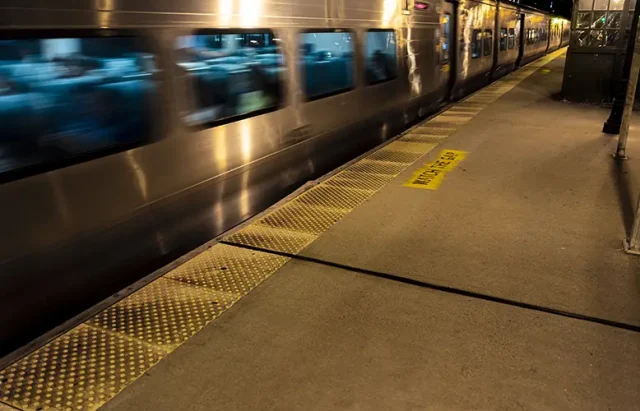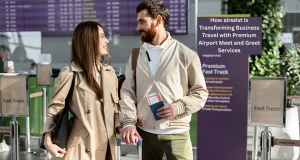
Moving to New York City can be overwhelming, especially when it comes to navigating one of the world’s most complex transit systems.
Whether you’re relocating with top rated New York City Movers or just visiting, mastering the NYC subway is essential for getting around the city efficiently and affordably.
Built in 1904, the New York City subway system is one of the oldest and most extensive in the world. It operates 24 hours a day, seven days a week, serving Manhattan, Brooklyn, Queens, and the Bronx, with Staten Island connected via ferry.
With over 472 stations and approximately 3.4 million daily riders, understanding this “human rubix cube” is crucial for any New Yorker.
Understanding NYC Subway Lines and History
Why the Lines Are Grouped So Strangely
The seemingly random grouping of subway lines with multiple colors and alphanumeric labeling is the result of decades of consolidation. The current subway system was originally built by three independent companies:
- The Independent Subway System (IND)
- The Brooklyn Manhattan Transit Corporation (BMT)
- The Inner Borough Rapid Transit Company (IRT)
Each company built tracks and tunnels independently, which is why stations don’t all look the same and have different aesthetics. By the 1940s, these systems were consolidated under one operator. Today, the New York City subway is owned by New York City and operated by the New York City Transit Authority, which is part of the Metropolitan Transportation Authority (MTA) run by New York State.
This historical development explains quirks like why the IND lines have letters A through G with an odd M (the M used to be part of the BMT line), or why there’s no K train despite having J, L, M, and N (there were actually two K lines that were eventually decommissioned or absorbed into other lines).
How Subway Lines Are Organized
Subway lines are grouped by color according to the avenue they converge at, usually around Midtown Manhattan. However, it’s not common to call them by color—people don’t say “the blue line,” they say “the A, C, E line.”
Important note: Just because subways share the same color doesn’t mean they share the same stations. Each line within a color group has its own unique route and stops.
Local vs. Express Trains: A Critical Distinction
Understanding the difference between local and express trains is crucial for efficient subway travel.
Using the A, C, E Line as an Example:
- A Train (Express): Runs from 207th Street in Manhattan through Brooklyn to three different Queens terminals. Called the “8th Avenue Express” because it skips certain stations for faster travel.
- C Train (Local): Runs from 168th Street in Manhattan to Euclid Avenue in Brooklyn, parallel to the A line but stops at ALL stations. Known as the “8th Avenue Local.”
- E Train (Local): Terminates at the World Trade Center in Manhattan and in Queens, converging with A and C on 8th Avenue. Also stops at all stations, making it another “8th Avenue Local.”
When you hear subway announcements saying “local train, the next stop is…” now you’ll understand what that means.
Reading the New NYC Subway Map
The MTA recently unveiled a completely redesigned subway map in April 2025—the first major update in nearly 50 years. This new map prioritizes clarity and accessibility over geographic accuracy.
Key Map Elements:
- White dots: Express AND local train stops
- Black dots: Local train stops ONLY
- Train line names: Listed next to the dots
The new diagrammatic design uses bold, straight lines and high contrast to make it easier to read, especially for people with visual impairments or cognitive disabilities.
Crosstown Trains
Most subway lines run north-south through Manhattan, but crosstown trains run east-west across the island on:
- 59th Street
- 53rd Street
- 42nd Street
- 14th Street
The 7 train is a notable crosstown line running along 42nd Street from Hudson Yards to Flushing, Queens, with both local (circular symbol) and express (diamond symbol) options in Queens.
Navigating Subway Signage
Directional Terms
For trains traveling through Manhattan:
- Uptown: Toward the Bronx (north)
- Downtown: Toward Brooklyn (south)
These terms only apply to Manhattan—don’t use them for other boroughs.
Platform Signage
Platform signs indicate the end-of-line station but sometimes include common stops along the way. The labeling can be inconsistent—the same terminal might be referenced by different names on different signs, which can be confusing for newcomers.
Entrance Signage
Pay attention to entrance signs before entering a station:
- Station name only: Trains in both directions available
- Station name + direction (e.g., “Uptown & The Bronx”): Only trains in that direction
- Underpass symbol: Access to trains in opposite direction available underground
Pro tip: Trains follow traffic flow. If traffic is moving in one direction, trains at that entrance will also go that way.
Identifying Subway Entrances
Look for distinctive lamp posts that resemble green globes—these mark most subway entrances. Prominent stations may not have these lamps but will be easily identifiable.
Payment: The Transition from MetroCard to OMNY
OMNY (One Metro New York) is Taking Over
MetroCard sales will end on December 31, 2025, with the cards being phased out completely by 2026. The new OMNY system offers several payment options:
Current Fare Prices:
- Subway and local bus: $2.90
- Express bus: $7.00
OMNY Payment Methods:
- Contactless credit/debit cards: Tap directly at turnstiles
- Smartphones and smartwatches: Use Apple Pay, Google Pay, Samsung Pay, or Fitbit Pay
- OMNY cards: Physical cards available for $1 (plus fare value)
OMNY Benefits:
- 7-day fare cap: After 12 rides ($34) in a 7-day period, additional rides are free
- Automatic transfers: Free transfers between subway and bus (within 2 hours)
- Account management: Track rides and manage payment methods online at omny.info
Where to Get OMNY Cards:
OMNY cards are available at:
- OMNY vending machines in subway stations
- Retail locations including Walgreens, CVS, 7-Eleven, and some bodegas
- Online with account setup
Essential Subway Safety and Etiquette Tips
Getting on the Wrong Platform
If you end up on a platform with trains going the wrong direction:
- Look for a crossover: Some stations have passages to the opposite platform
- Exit and re-enter: You’ll pay another $2.90 unless you have OMNY’s unlimited benefits
- Ride to a transfer station: Take the train one stop to a station where you can cross over
- Ask station personnel: Attendants may help you access the correct platform
Current Safety Measures
Since January 2025, two NYPD officers patrol each train between 9 p.m. and 5 a.m., moving from car to car at each station for enhanced security.
Special Considerations for New Residents
If you’re relocating to NYC with top rated New York City Movers, consider these additional tips:
- Plan your apartment location around subway access: Proximity to express stations can significantly reduce commute times
- Download the official MTA app: Real-time updates and service changes
- Learn your local stations: Memorize nearby stations and their available lines
- Keep backup payment methods: Always have multiple payment options in case of technical issues
Conclusion
The New York City subway system has a steep learning curve, but mastering it opens up the entire city. With 24/7 service, extensive coverage, and affordable fares, it’s the most efficient way to navigate NYC. The recent technological updates, including the new map design and OMNY payment system, are making the subway more user-friendly than ever.
Don’t be intimidated by the complexity—millions of riders navigate this system daily. With practice and these guidelines, you’ll soon be riding the rails like a true New Yorker. Whether you’re commuting to work, exploring neighborhoods, or heading to appointments, the subway will become your gateway to everything the city has to offer.
Planning a move to New York City? Contact top rated New York City Movers for professional, reliable moving services to make your transition to the Big Apple as smooth as your future subway rides.





